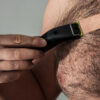The problem of excessive hair loss is a common phenomenon that affects both men and women regardless of age or lifestyle. Fortunately, in such situations, hair transplantation and grafts taken from the patient’s donor area come to the rescue. What are they and what exactly does their collection look like?
- 1. What are grafts?
- 2. Who is eligible for graft transplantation?
- 3. What are the contraindications to graft transplantation surgery?
- 4. What does graft retrieval involve?
- 5. What are quality grafts?
- 6. How long does it take to get grafts?
- 7. Can grafts fail to take hold?
- 8. Why is accurate graft harvesting so important?
- 9. How much does a graft transplant cost?
What are grafts?
Grafts are defined as hair follicles with their bulbs and sebaceous glands. Even differently, grafts are said to be the natural cluster in which hair grows. A single graft is always equated with one hair, because no matter what area it covers, one to four hairs grow in the graft.
Depending on the area encompassing the scalp, grafts can have different amounts of hair. For example, on the back of the head there are 3 and 4 hair grafts, and on the sides of the head the number of hairs in a single graft can range from 1 to 2.
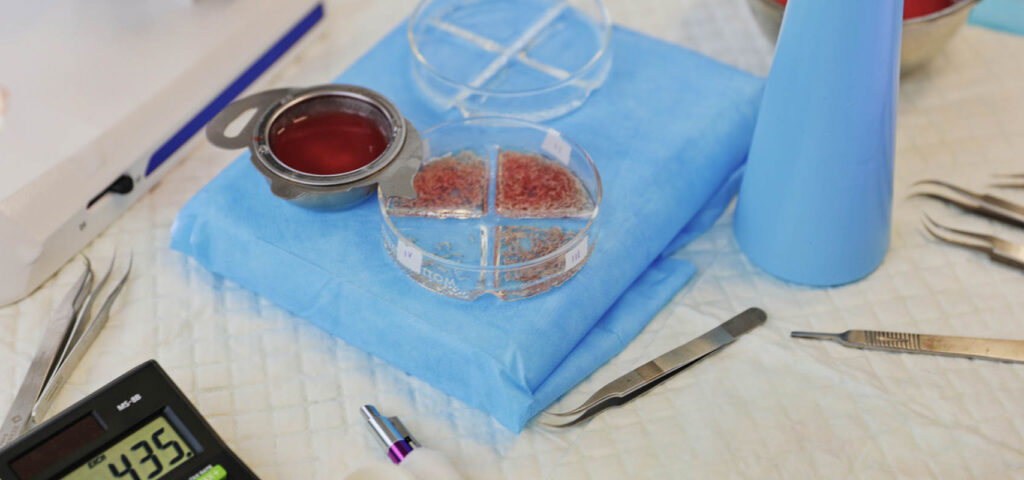
Very often, the graft is also referred to as the recipient area, since grafts with different numbers of hairs are required to design the transplant procedure and the transplant itself. This is necessary, for example, because specific types of grafts have their own specific role in thickening hair as part of the procedure. The one-hair ones, for example, are responsible for creating a hairline, while the 3 and 4-hair ones are responsible for thickening the hairstyle. That’s why it’s so important that the graft taken for hair transplantation is in undamaged and the best possible condition.
Who is eligible for graft transplantation?
Among the indications for graft transplantation are, for example. Patients with conditions such as:
- androgenic alopecia,
- alopecia as a result of irradiation,
- hair loss resulting from inflammation of the scalp (in which case, however, the procedure can be performed only after the inflammation has healed),
- hair loss due to trauma,
- hair loss occurring as a result of burns,
- scars from surgeries,
- hair loss occurring in the area of eyebrows, eyelashes, facial hair,
- hair loss in the pubic area.
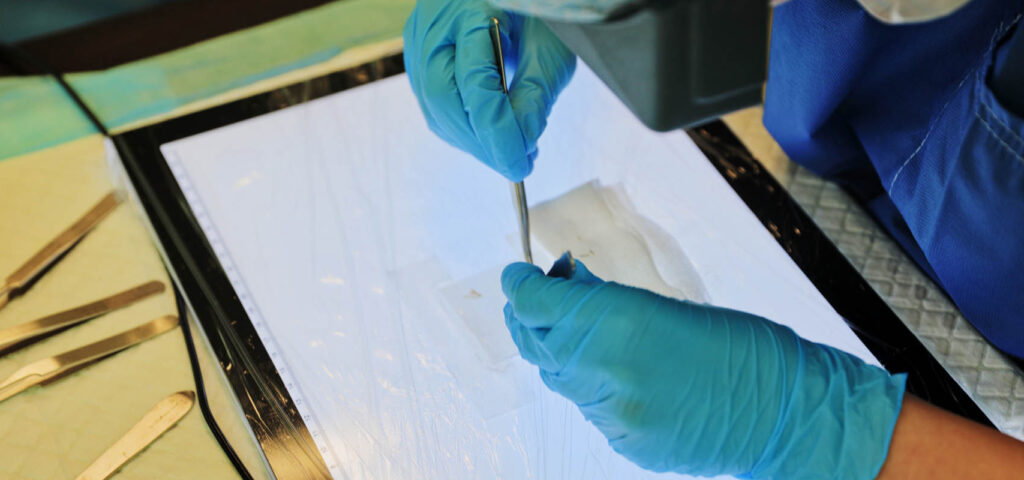
What are the contraindications to graft transplantation surgery?
Although the graft transplant procedure, performed by an experienced doctor, carries virtually no risk or danger to health, there are some contraindications to the procedure. Prominent among the most important include:
- advanced diabetes and cardiovascular disease,
- psoriasis,
- blood coagulation disorders,
- Active inflammation of the skin in the treated area,
- Allergy to anesthesia agents,
- Premature androgenetic alopecia,
- cancers,
- alopecia areata,
- chronic infectious diseases.
What does graft retrieval involve?
The collection of grafts for the procedure depends on the chosen method of hair transplantation. However, with both the FUE and FUT (STRIP) techniques, graft splitting is performed. The procedure performed by the FUE method involves collecting them with a special tool. Its diameter necessarily needs to be a little larger than the diameter of the graft, since a small amount of fat from the immediate vicinity is taken along with it. However, the diameter of the tool must not be too large, because then the risk of damaging adjacent grafts increases.
Some specialists may choose to separate the grafts, for example, two grafts with single and double hairs are created from three. However, this is not a good solution, because the patient in effect has to bear the cost of two grafts, even though the number of transplanted hairs has not actually changed. Besides, as a result of such divisions, the graft can be damaged or even destroyed, leading to the death of the hair.
This is a result of the depletion of the protective layer in adipose tissue, glands and muscle receptors, which occurs as a result of graft separation. So it is not worth leaving one part of the graft in the donor area, because a doctor who makes the right calculation and properly extracts the grafts will not visibly reduce the density of the donor area.
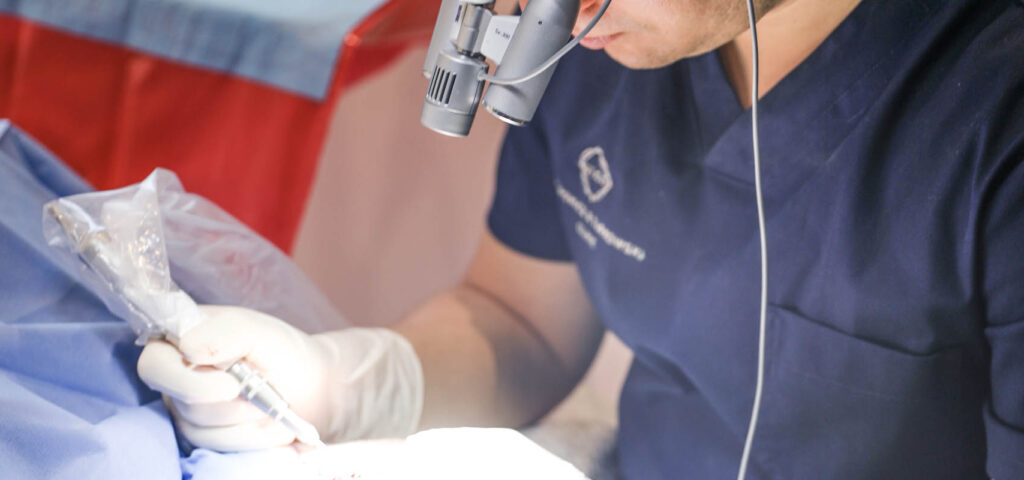
The FUE technique is one of the most widely used and innovative hair transplantation techniques, which implies that a single-hair graft can be taken from the entire donor area. Thus, grafts are not divided so radically. An experienced doctor, using a tool with the right diameter, correctly removes and implants intact grafts. In order to achieve the desired results and a long-lasting treatment outcome, it is also necessary to have an excellent knowledge of the anatomy of the skin and the angle at which hair grows. This is needed to exclude accidental and intentional risks of graft separation.
The donor area, or the one from which the grafts are taken, is usually the back of the head on the occipital area, since hair grows there, which has resistance to testosterone fluctuations. In the case of androgenetic alopecia, taking grafts from the occipital area of the head helps ensure that the transplanted hair does not fall out in the same areas affected by the procedure.
The FUE method can be performed both manually and with an ARTAS robot. In the case of the first technique, the doctor takes individual grafts with a scalpel or special instrument. He then prepares them for transplantation, separating and selecting them.
FUE ARTAS is also based on the harvesting of single grafts, but they are harvested using an ARTAS device that scans and analyzes the recipient site beforehand. This makes it possible to select the most favorable grafts in terms of quality for transplantation. The robot also implants hair follicles in the recipient site.
What are quality grafts?
Qualitative grafts are those that include healthy and strong hair follicles. Getting the best quality of them is very important for the transplantation effect, so regardless of the hair transplantation technique, a thorough analysis of the follicles is always carried out before transplantation. This stage usually takes place after graft retrieval. The exception is the FUE ARTAS technique, where the robot initially scans the recipient site and selects the best follicles for subsequent retrieval. Both the selection of the best grafts and their precise retrieval without damaging the structure are important for the final results of the procedure.
How long does it take to get grafts?
The duration of the procedure and graft harvesting depends on the recipient area. With manual FUE transplantation, it is very difficult to determine precisely how long the entire procedure will take and how many hair follicles will be harvested. The situation is much different with the FUE ARTAS procedure. Then about 1,000 grafts can be retrieved per hour in a single procedure.
Can grafts fail to take hold?
Of course, there is a small risk that the implanted grafts will not take. However, this is a very low probability, affecting less than 10% of transplanted follicles. More than 90% of grafts after transplantation are accepted. The final result of the treatment and the effectiveness of the procedure is always determined by the number of grafts retrieved, the precision of the retrieval and their implantation. Grafts must be extracted and implanted without damaging their structure, at the correct depth and angle.
Why is accurate graft harvesting so important?
Thus, a hair transplant is a procedure for precisely taking grafts from a specific location on the body – the donor area – and placing them in the bald area – the recipient area. Grafts are taken from the posterior region of the head and flanks. The occipital region has grafts that are highly resistant to androgens that contribute to hair loss.
That’s why if the patient has the problem of androgenetic alopecia, the precision with which the grafts are taken from the occipital region makes it possible to achieve success and ensure that the transplanted hair does not fall out. So the effect will be very long-lasting. Precise harvesting and implantation of grafts avoids damage to their structure and preserves all the desired features. Such hair after treatment will grow at a natural rate and will go through the entire growth cycle – from anagen to telogen. The first hair after transplantation can be seen after about 3 months, but you have to wait about a year for the full effect.
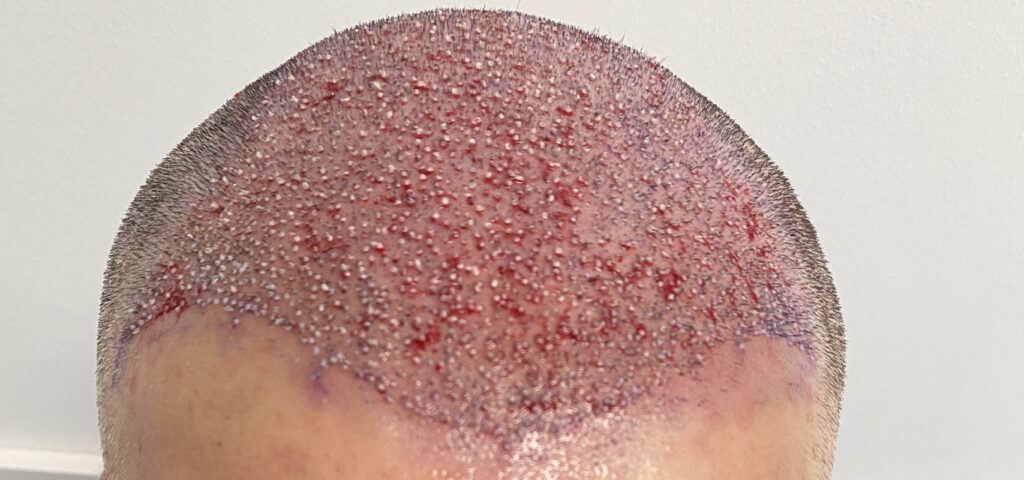
Precisely harvested and implanted graft is the foundation of hair transplant success. The most important role in the battle for the success of the transplant procedure is played by the experience of the doctors and technicians who perform the procedure. It is the experience of the medical staff that determines the success of the outcome after hair transplantation.
How much does a graft transplant cost?
The price depends primarily on the number of grafts retrieved and implanted. For example, 800 to 1,000 grafts are transplanted in the case of bends, bends with the top of the head area from 1,500 to 2,000 grafts, and the back of the head – about 1,000 grafts. If, on the other hand, a patient undergoes a full head hair transplant, about 3,000 grafts are taken and implanted.
When the procedure involves a small graft transplant of up to 1,000, then the price can be up to PLN 15,000. Such a procedure involves transplanting bends or lowering the hairline. On the other hand, for an average graft (involving the corners or top of the head area) of 1,000 to 2,000 grafts, the cost can range from £15,000 to £27,000. A large hair transplant covering the entire head, on the other hand, requires between 2,000 and 2,800 grafts and costs between $3,000 and $35,000. In patients who require a maximum procedure with more than 2,800 grafts, the cost can be more than PLN 35,000. Learn more about hair transplant costs.
At OT.CO Clinic, we use only certified, best quality tools and equipment for hair transplantation. This ensures that the harvested and implanted follicles are not damaged, and the results of the treatment will be durable and satisfactory. We employ only experienced staff who care about the welfare of our residents and their health. If you have any doubts, we provide comprehensive support. We conduct medical consultations in which the patient will receive a thorough explanation of the procedure and together we will determine the possible results. Graft transplantation at the OT.CO Clinic is therefore carried out to the highest standards and we always take an individual approach to everyone who turns to us for help. So get to know all the advantages and possibilities of hair transplantation in our Clinic.




